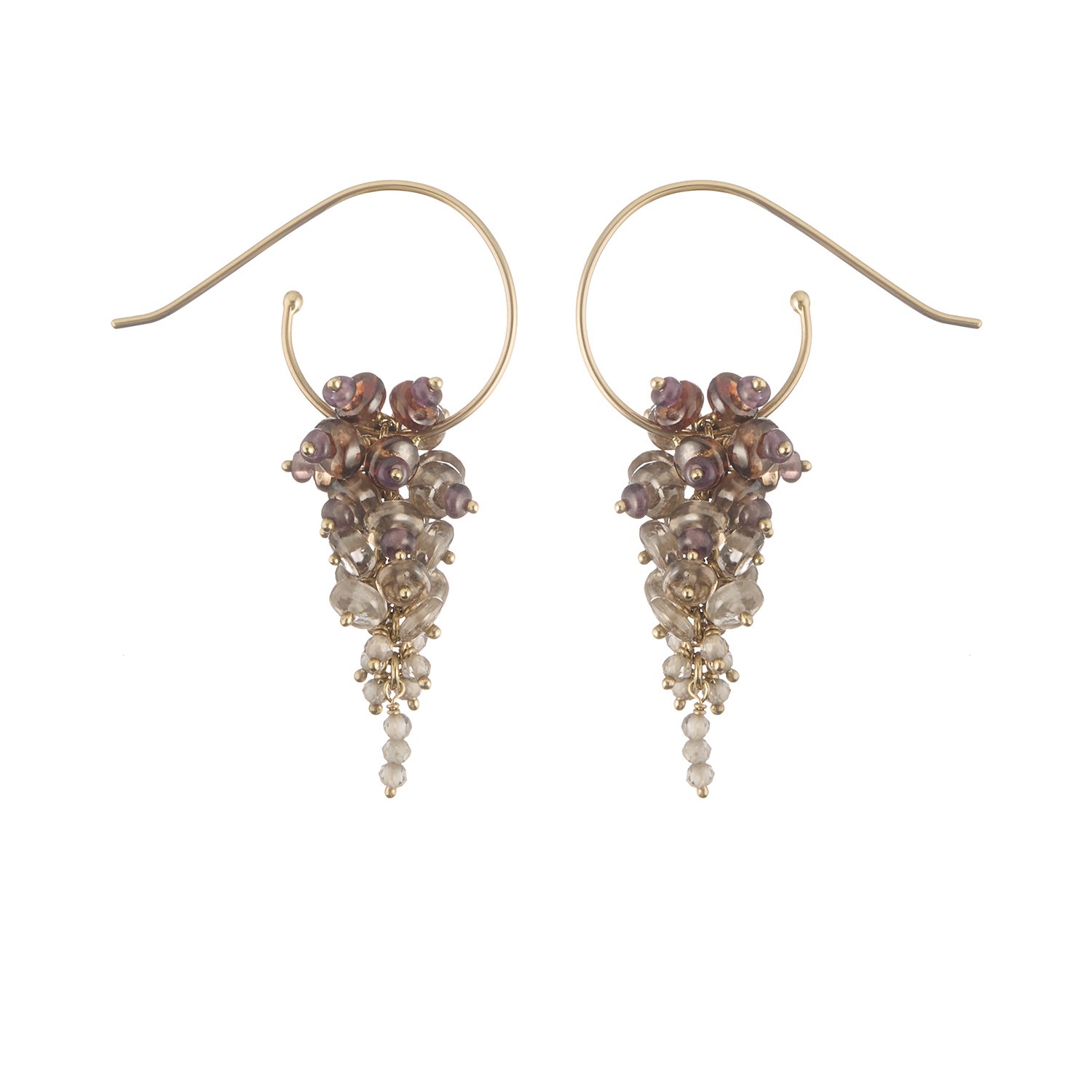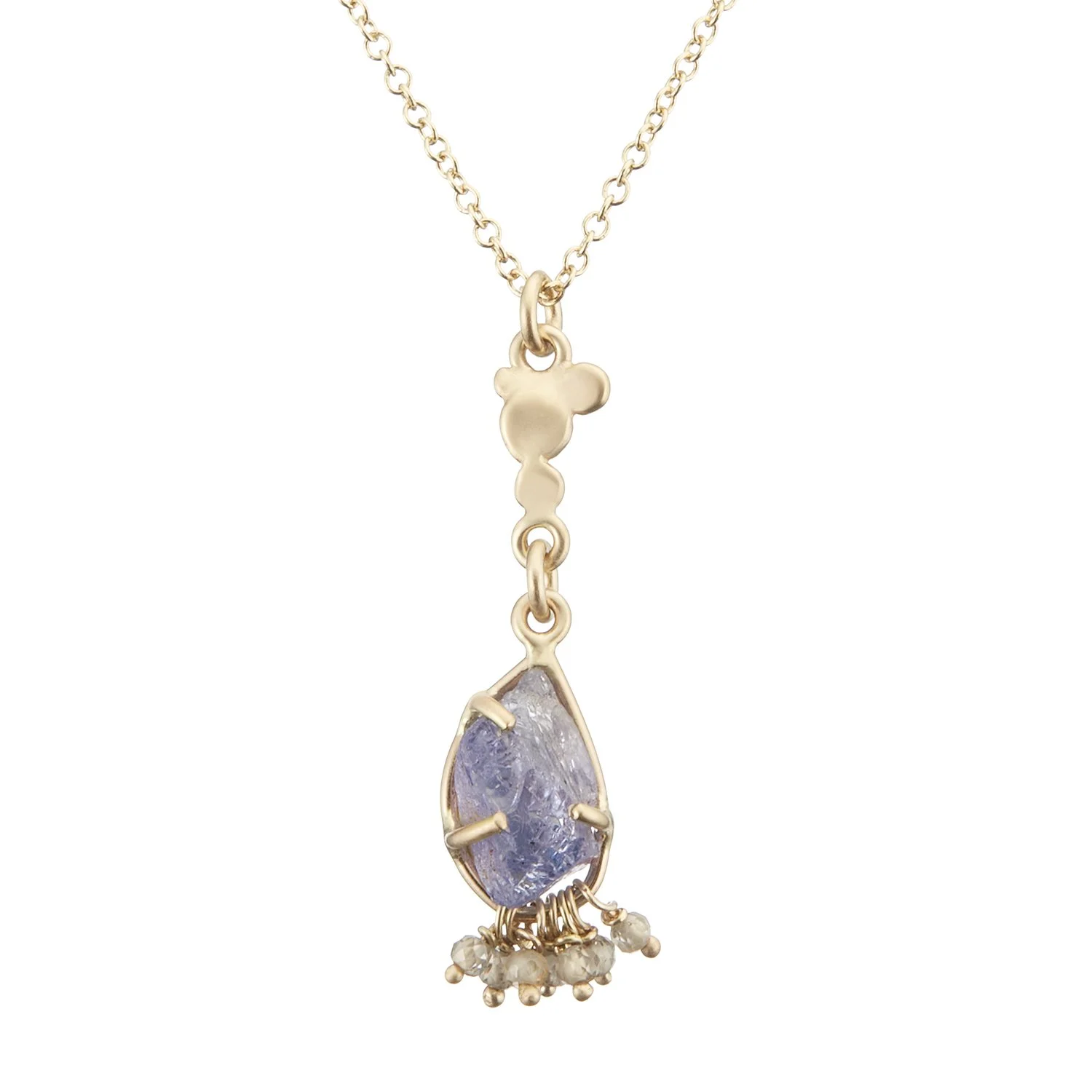Sapphire: The Celestial Stone of Wisdom and Royal Legacy
A strand of Cambodian sapphire faceted rondelle beads. Photo credit: Michelle Pajak-Reynolds
There’s something magical about sapphire. As a jeweler, I’m drawn to its quiet strength and regal presence. This stone has been enjoyed for centuries by numerous civilizations.
A Gem with Stories
Sapphires weren’t just for crowns. Long before they sat in royal hands, people saw them as sacred, full of wisdom, protection, and truth. The word comes from the Greek sappheiros, meaning “blue,” but these stones have always been more than just a color.
Persians believed the earth rested on a giant blue sapphire, and its reflection painted the sky. The Talmud says the Ten Commandments were carved on sapphire tablets. Catholic cardinal rings have featured sapphires as a symbol of divine connection.
Even today, sapphires speak to us. Blue ones are said to open the throat and third-eye chakras, helping inner truths rise and letting dreams flow more freely. Gentle guides, subtle and powerful at the same time.
Once the birthstone for April, sapphires moved to September’s stone in 1912. They’re linked with Taurus and perfect for marking 5th, 45th, or 65th anniversaries. Like diamonds, sapphire is a stone made under pressure and time, and it carries that kind of enduring love.
Rough (unfaceted) ethically-sourced Umba sapphires from Tanga, Tanzania. These gems are unique to the Gerevi Hills, north of the Umba River, in the Umba Valley of Tanzania. Umba sapphires are known for their incredible color varieties not typically found in other parts of the world. Photo courtesy Josephat Maboi, gemstone miner and dealer at East Africa Gems.
Colorful Alchemy: The Gemology of Sapphire
Most people think of sapphires as deep blue, but they come in nearly every color. They’re made of corundum, clear on its own, but trace elements like iron, titanium, chromium, and vanadium give sapphire a range of colors:
Classic blue: iron + titanium
Violet or color-change: vanadium
Pink: chromium
Green and yellow: iron
Rare orange padparadscha: iron + chromium
Sapphires appear across the globe including Africa, Southeast Asia, Kashmir, Myanmar and even in Montana, where the stones are uniquely beautiful as Big Sky Country itself.
Caring for Your Sapphire Treasures
Sapphires are second only to diamonds in hardness, making them ideal for everyday wear. Still, they deserve reverence and care. I recommend cleansing them with warm water, gentle soap, and a soft brush. Always store sapphire jewels apart from softer stones like opals or pearls, to protect their sparkle.
More Than a Gem: A Keeper of Stories
For me, creating and wearing sapphire jewelry is like cradling echoes of ancient skies, royal stories, and the quiet power of inner knowing. Whether set into a minimalist talisman or a one-of-a-kind heirloom, a sapphire is never just an adornment. It is a keeper of legacy, a symbol of strength, and a reflection of the sacred.
Sapphire Jewelry
Please note, all metaphysical and healing properties listed are collected from a variety of sources and shared for educational, historical and entertainment purposes only. The authors and Michelle Pajak-Reynolds Studios LLC do not guarantee the validity of such statements nor is any of this information meant to treat medical conditions. If you have a medical concern, please consult your medical provider for appropriate treatment options.



















